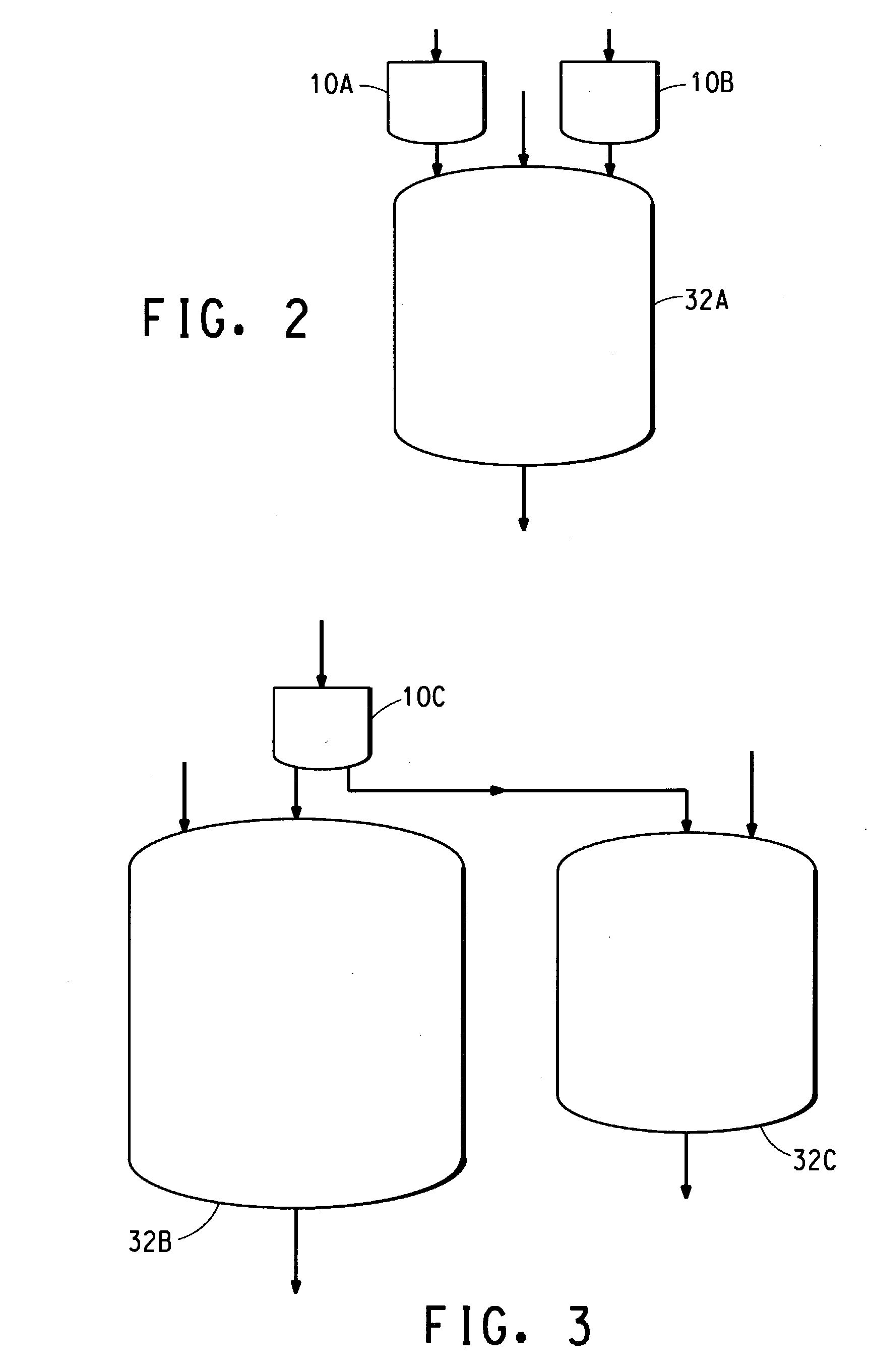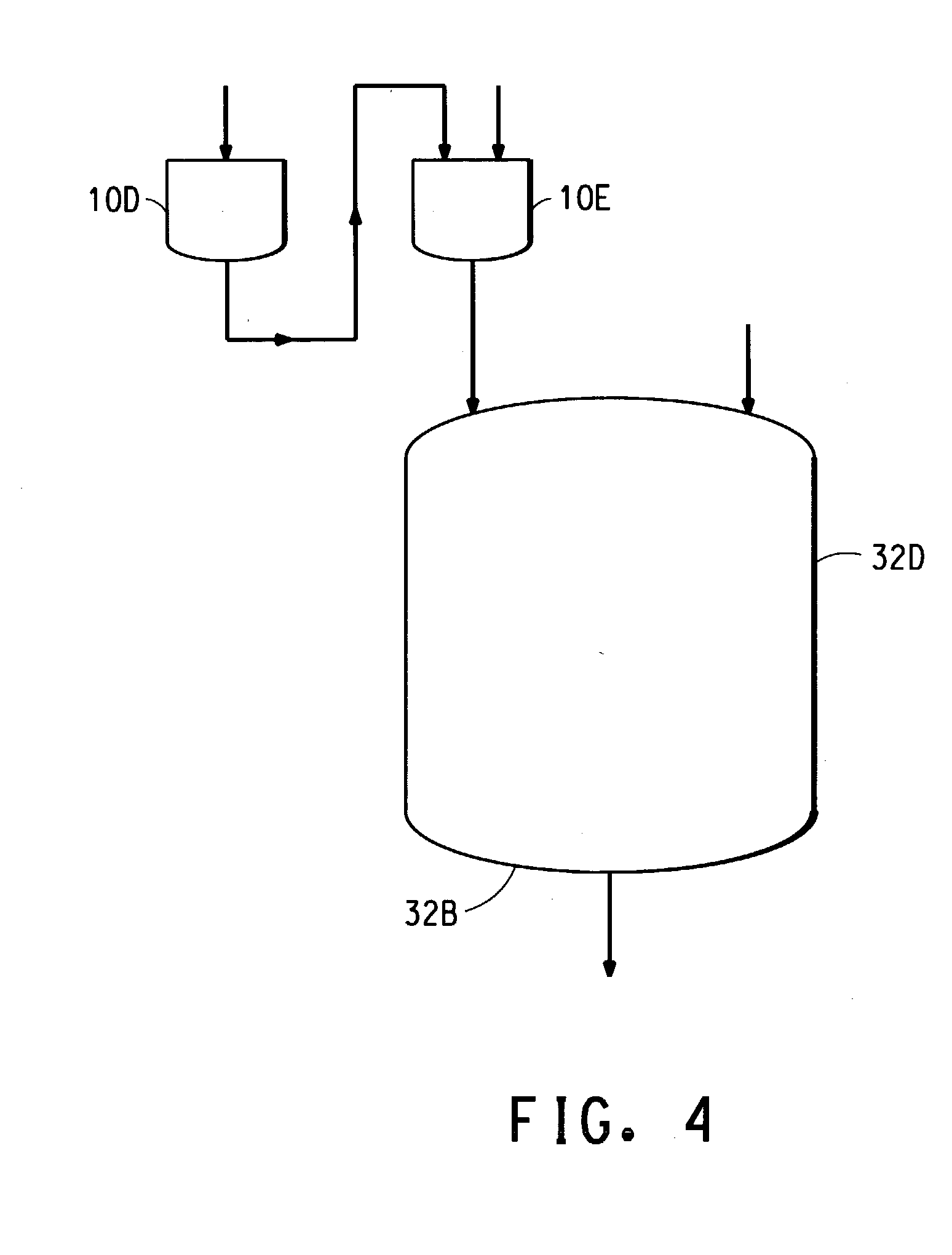Pressurized high temperature polymerization process and polymerization system used therein
a polymerization process and high temperature technology, applied in chemical/physical processes, machines/engines, process and machine control, etc., can solve the problems of increasing the cost of production, increasing the cost of process, and objectionable odors,
- Summary
- Abstract
- Description
- Claims
- Application Information
AI Technical Summary
Benefits of technology
Problems solved by technology
Method used
Image
Examples
examples
Comparative Copolymer 1
[0122] To a 2-liter flask fitted with an agitator, water condenser, thermocouple, nitrogen inlet, heating mantle, and addition pumps and ports was added 305.3 g. of xylene supplied by ExxonMobil, Houston, Tex., which was agitated and heated to reflux temperature (137.degree. C. to 142.degree. C.). A monomer mixture comprising of 106.1 g of styrene (Styrene from BP Amoco, Tex. City, Tex.), 141.4 g. methyl methacrylate (MMA from Lucite International, Inc. Cordova, Tenn.), 318.3 g. iso-butyl methacrylate (1-205 from Lucite International, Inc. Cordova, Tenn.), 141.4 g. hydroxyethyl methacrylate (Rorcryl.RTM. 400 from Rohm and Haas Company, Philadelphia, Pa.) and 10.4 g of xylene supplied by ExxonMobil, Houston, Tex. was then added to the flask via the addition pumps and ports simultaneously with an initiator mixture comprising 17.0 g. t-butyl peracetate (Luperox.RTM. 7M75 initiator from Atofina, Philadelphia, Pa.) and 85.2 g. xylene supplied by ExxonMobil, Houston...
PUM
| Property | Measurement | Unit |
|---|---|---|
| temperatures | aaaaa | aaaaa |
| pressures | aaaaa | aaaaa |
| pressures | aaaaa | aaaaa |
Abstract
Description
Claims
Application Information
 Login to View More
Login to View More - R&D
- Intellectual Property
- Life Sciences
- Materials
- Tech Scout
- Unparalleled Data Quality
- Higher Quality Content
- 60% Fewer Hallucinations
Browse by: Latest US Patents, China's latest patents, Technical Efficacy Thesaurus, Application Domain, Technology Topic, Popular Technical Reports.
© 2025 PatSnap. All rights reserved.Legal|Privacy policy|Modern Slavery Act Transparency Statement|Sitemap|About US| Contact US: help@patsnap.com



